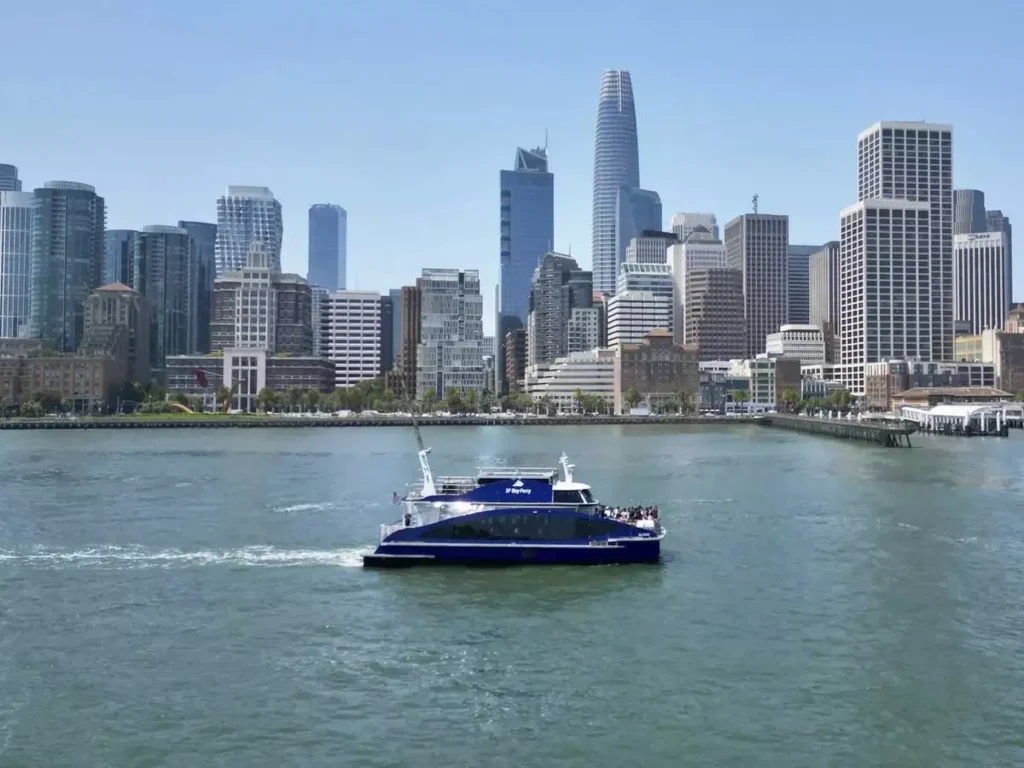The world’s first commercial passenger ferry powered by 100% hydrogen fuel cells (HCFs), the MV Sea Change, was launched at the San Francisco Ferry Building.
- The MV Sea Change can travel approximately 300 nautical miles and operates for 16 hours before needing a refuel.
About Hydrogen Fuel Cells (HCFs):
- Hydrogen Fuel Cells (HFCs) generate electricity through electrochemical reactions between hydrogen and oxygen.
Components:
- Anode and Cathode: These electrodes play a critical role in the electrochemical process.
- Electrolyte: Transports charged particles within the cell.
- Catalyst: Speeds up the reactions at the electrodes.
Fuel and Reaction:
- Fuel: Utilizes hydrogen primarily, with oxygen as a supplemental element.
- Process: Hydrogen is introduced to the anode, air to the cathode.
- Output: The reaction produces electricity, water, and heat. Electricity flows through an external circuit.
Environmental Impact:
- HFC vehicles emit no tailpipe pollutants such as particulates, oxides of nitrogen, carbon monoxide, or carbon dioxide.
Ref: Source
| UPSC IAS Preparation Resources | |
| Current Affairs Analysis | Topperspedia |
| GS Shots | Simply Explained |
| Daily Flash Cards | Daily Quiz |
Frequently Asked Questions (FAQs)
How does a hydrogen fuel cell generate electricity?
A hydrogen fuel cell generates electricity through electrochemical reactions between hydrogen and oxygen, with anode and cathode electrodes, an electrolyte, and a catalyst playing critical roles in the process.
What are the components of a hydrogen fuel cell?
The components of a hydrogen fuel cell include anode and cathode electrodes, an electrolyte for transporting charged particles, and a catalyst to speed up reactions at the electrodes.
What environmental impact do hydrogen fuel cells have?
Hydrogen fuel cells have a positive environmental impact, as they produce only water, heat, and electricity as outputs, with no harmful emissions being released during operation.



